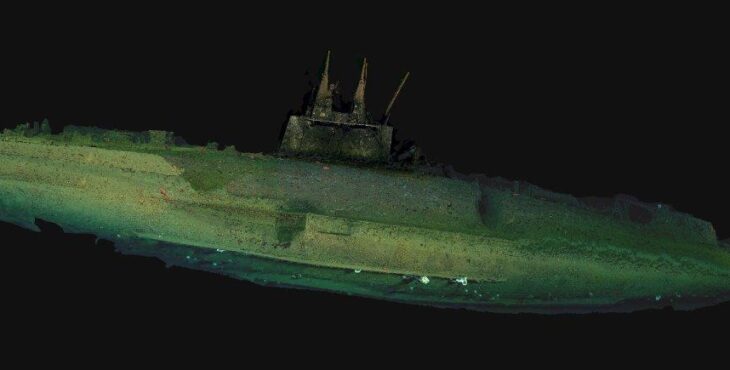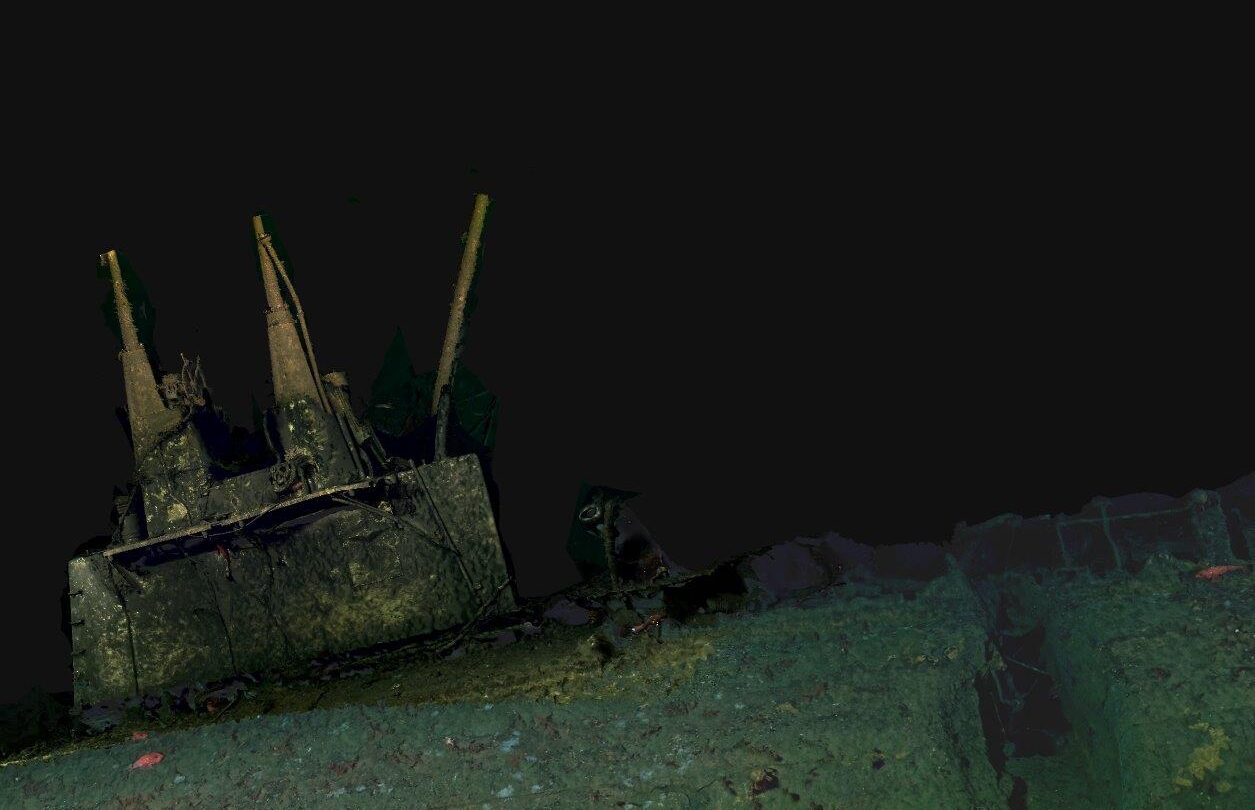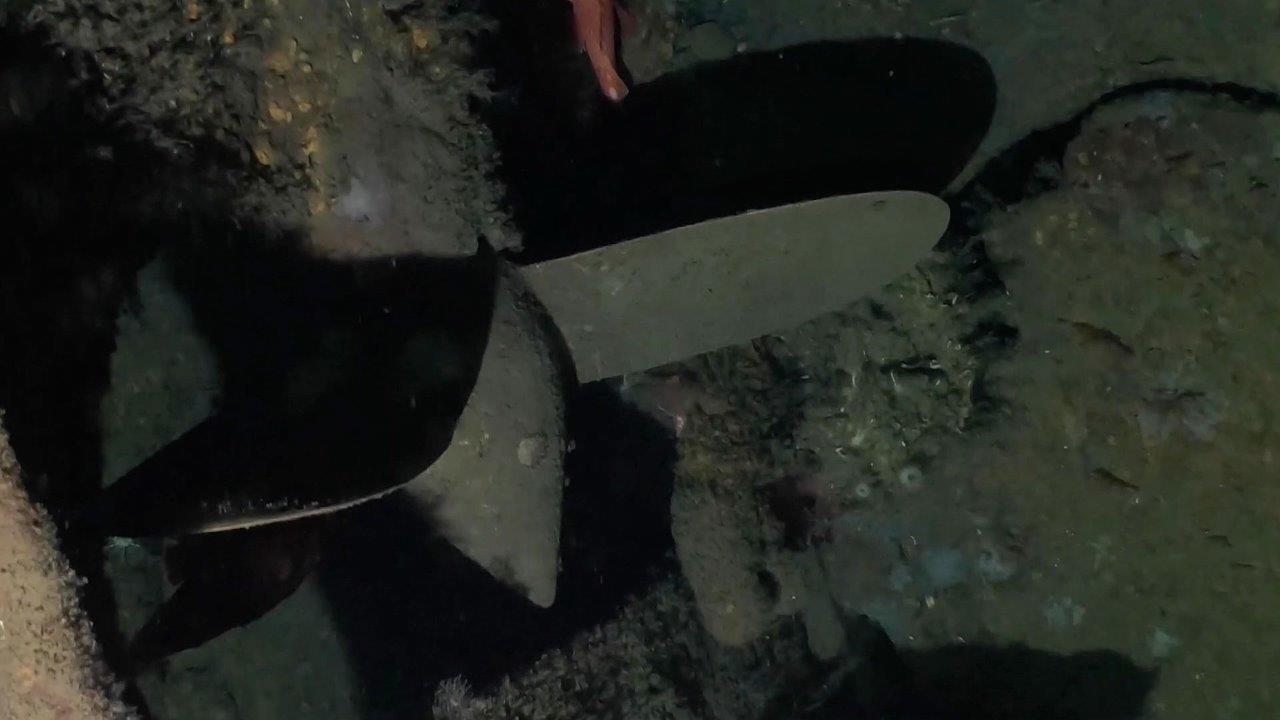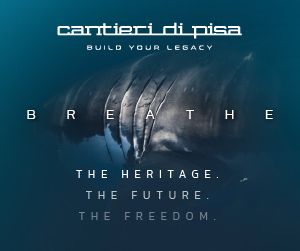The wreck of American F-1 submarine discovered and photographed off the coast of California
Researchers from Woods Hole Oceanographic Institution have completed a detailed survey of the F-1 submarine using sonar, photographic imaging and video

Researchers from Woods Hole Oceanographic Institution have completed a detailed survey of the F-1 submarine using sonar, photographic imaging and video

Articolo riservato agli utenti registrati
Sali a bordo della community DN Plus.
Per te, un'area riservata con: approfondimenti esclusivi, i tuoi articoli preferiti, contenuti personalizzati e altri vantaggi speciali
Accedi RegistratiIn the spring, researchers from Woods Hole Oceanographic Institution (WHOI), descended 400 metres underwater inside a vehicle dubbed Alvin, accompanied by an autonomous vehicle called Sentry, from the National Deep Submergence Facility (NDSF) to acquire close-up images of the underwater wreckage of the American S-1 submarine, off the coast of San Diego, California.
Scientists, accompanied by the National Science Foundation (NSF) completing systems and engineering tests, completed surveys of the submarine using video cameras, imaging systems on Alvin, as well as sonar systems on Sentry and the research vessel Atlantis. The researchers also examined an Avenger Navy torpedo bomber training aircraft that crashed near the same location in 1950.
A few days ago, the foundation published detailed high definition images of the submarine, which was lost at sea following during World War I in an accidental collision on December 17, 1917, resulting in the death of 19 crew members. The results come from the work carried out by this inter-agency team, as well as using advanced imaging technology in deep water. The photogrammetical reconstruction of the wreckage, by Zoe Daheron from WHOI is exceptional.
“Advanced oceanographic technology and simple teamwork - said Bruce Stickrott from WHOI, and pilot of the submarine which carried the team - played a fundamental role in providing these new images. Once we identified the wreck and determined it was safe to dive, we were able to capture never-before-seen perspectives of the sub As a U.S. Navy veteran, it was a profound honour to visit the wreck of the F-1 with our ONR (Office of Naval Research), UNOLS (University-National Oceanographic Laboratory System) and NHHC colleagues aboard Alvin.”
The seven dives were part of a previously planned training and engineering mission, conducted by Team Alvin, to give pilots-in-training time to hone their skills and to allow for the development of new technology and skills, benefiting the deep water research community. The mission was to survey geological dangers in the ocean depths and study remote ecosystems.
In addition to scientific research, historians from the Naval History and Heritage Command (NHHC) participated with the aim of preserving and presenting an accurate history of the US Navy, which includes the location, interpretation and protection of military ships and aircraft. “It was an incredibly exciting and humbling experience - said underwater archaeologist Brad Krueger - It enabled us to document the location and honour the sacrifice of these brave American sailors. The entire NHHC team is grateful for this partnership, which allowed us to document and evaluate the condition of the wreck.”
The submarine, which entered into service on 18 June 1912, during the Great War, was posted in the Pacific Ocean, when, on 17 December 1917, it collided with the F-3 during training exercises in a fog bank: it sank in only ten seconds, taking with it 19 of the 24 crew members on board.
After the dives, a remembrance ceremony was held on board the Atlantic, above the site of the wreckage. A bell was rung 19 times, for each of the sailors lost at sea. “History and archaeology - explained Krueger - are all about people and we felt it was important to read their names aloud The Navy has a solemn responsibility to ensure the legacies of its lost Sailors are remembered.”
Regarding the images taken, the WHOI noted that “the rapid improvement of imaging technology has improved the team’s ability to inspect and document the site of the F-1. High-resolution seafloor maps were developed by Sentry and Atlantis’s multi-beam sonar. And Alvin’s imaging systems captured stills and video, later processed into high-resolution photogrammetric models by WHOI specialists. The models preserve the submarine, and the animals who have colonised it, digitally and also reveal its structural state. The use of new tools and techniques provided real-time training for us to use in future missions, including mapping strategies of the complex topography of the ocean floor.”
This new technology, along with interdisciplinary strengths and the desire to research the ocean floor, are the keystone to the success of these initiatives, much harder for us to carry out due to the chronic lack of funds, not of ideas. Maybe, though, we can take inspiration. The best definition of the ocean floor is the one on their website: “Exploring new frontiers. Woods Hole Oceanographic Institution is the world’s leading independent non-profit dedicated to ocean science, technology, education, and communication. Our scientists and engineers push the boundaries of knowledge about the ocean to reveal its impacts on our planet and our lives.
“WHOI - continues the site - is a non-profit private organisation based in Cape Cod, Massachusetts, dedicated to marine research, engineering and higher learning. Founded in 1930, its main mission is to advance knowledge of the ocean and its connection with the Earth system. Scientists, engineers and students work together on over 800 projects taking place all over the world, both above and below the water, expanding the confines of knowledge and possibilities.”
Photo source: WHOI






